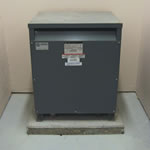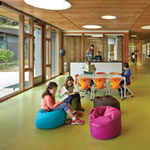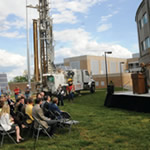
Kenyon College is seeing thousands of dollars in savings from the installation of a smart thermostat system in its residence halls, and students are appreciating the upgrade.

The University of South Carolina is looking long-term at sustainability and the total cost of ownership of its facilities, including the new home of the Darla Moore school of business.

Wasting Energy and Resources, Low Voltage Distribution Transformers (LVDT).

Designing a new K-4 school that is comfortable for young occupants and easy to operate and maintain.

An innovative installation on the Carrier Dome is diverting rainwater into a usable commodity.
A new bio-based phase-change material is providing HVAC savings.

A slew of new California building codes came on line this summer. What does this mean for the Golden State and the rest of the country?
EPA ENERGY STAR makes it easy to save up to $50 per PC annually.

Or is it just you? Internal air quality and comfort are more than just temperature. Whether your school is pushing the envelope or making small changes, there are many ways to keep building occupants happy and energy bills in control.
The bottom-line benefits of the EPA's ENERGY STAR program.

Here's how energy benchmarking is helping some school districts reduce energy consumption, thereby gaining energy savings. It may be just the tool your district needs.

The Geothermal Energy Project at Missouri University of Science and Technology
The design and up-fit of educational facilities should be the result of a whole systems approach and not one of designing and installing isolated pieces and parts.
The Collaborative for High Performance School (CHPS) released the fourth edition of the California CHPS Criteria (CA-CHPS) on Aug. 25, 2014.

This recently released guide provides a host of tools and resources for administrators, teachers and parents concerned with making healthy purchasing decisions that are good for students and the school environment.
Across the country, colleges and universities are spending their green on green.
Facilities and the conditions of the learning environment have an effect on students and staff.